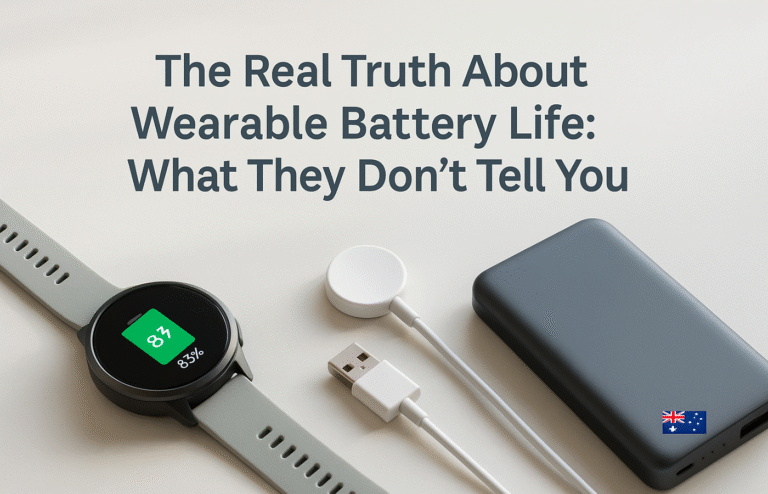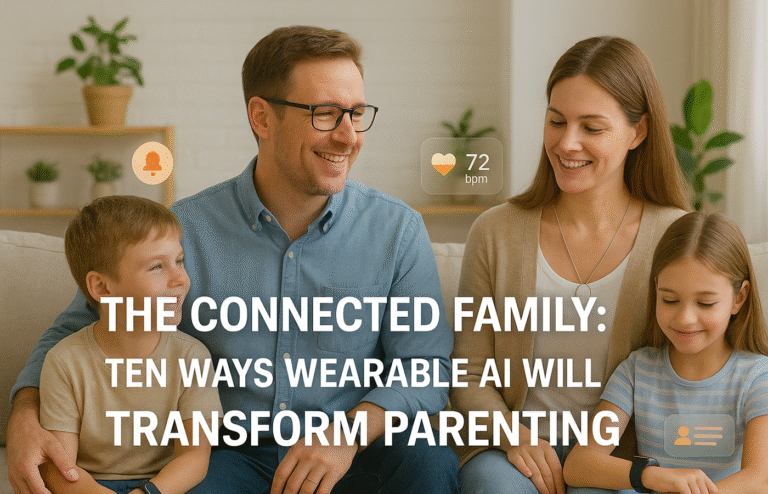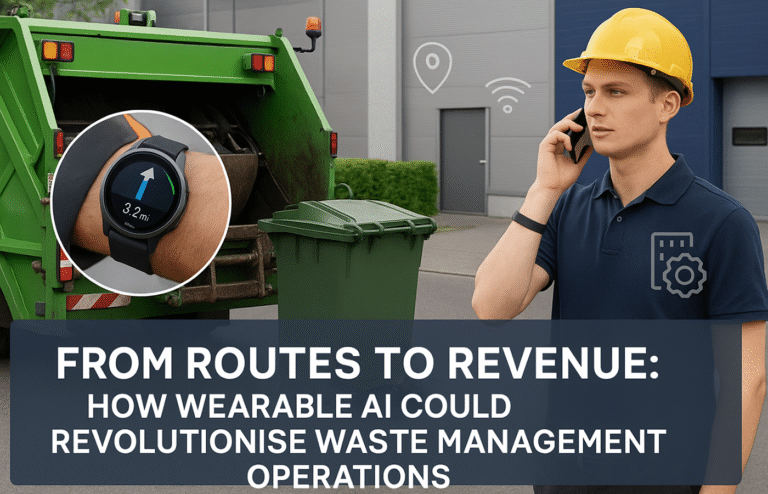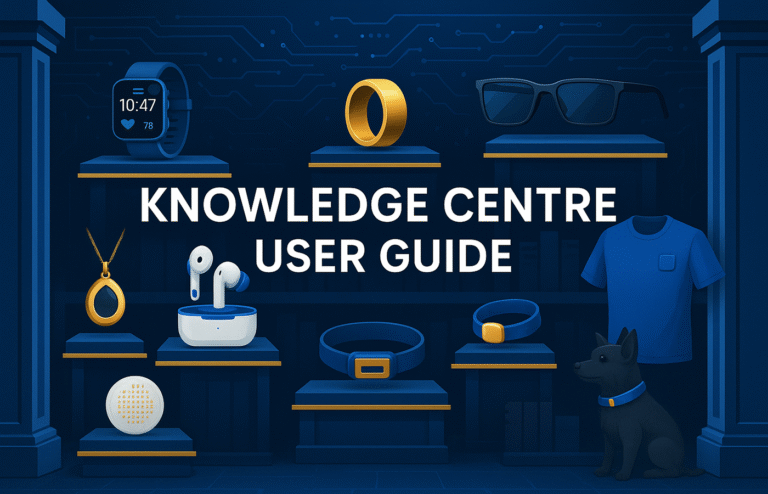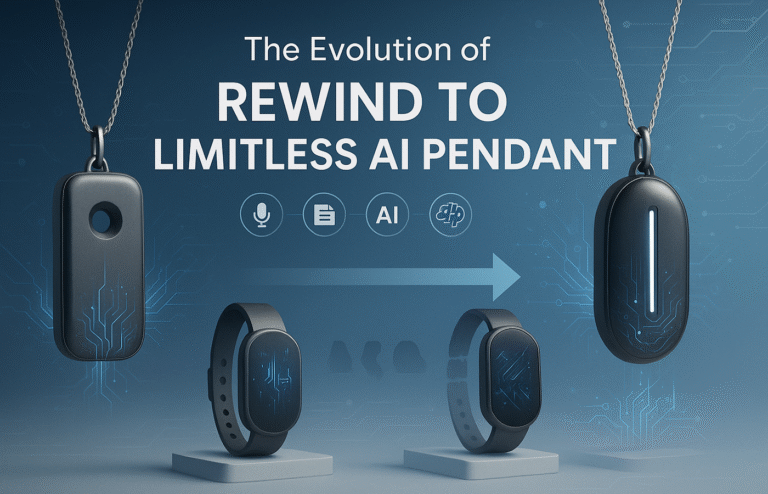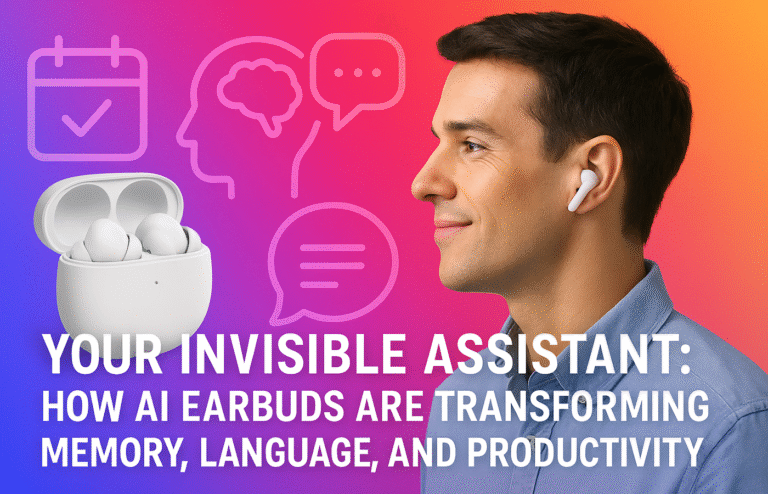100 Everyday Problems That Wearable AI Can Solve for Aussies in 2025
Australia’s $7.31 billion wearables market by 2030 reflects how AI devices now address virtually every daily challenge Australians face. From medication reminders to workplace productivity, these sophisticated devices have evolved beyond simple fitness tracking.
Key Problem Categories:
● Health monitoring and medication management
● Workplace productivity and stress reduction
● Safety and emergency response
● Fitness optimisation and recovery tracking
● Daily routine automation and reminders
Device Types Available:
● Smart watches and fitness trackers (most comprehensive solutions)
● Smart rings (discrete health monitoring)
● Smart eyewear and AI necklaces (specialised applications)
● Smart clothing and sensor patches (targeted monitoring)
Australian Context:
Solutions address unique local challenges including extreme weather conditions, long commutes, aging population needs, and outdoor lifestyle demands. Many problems require device combinations rather than single solutions for optimal results.
100 Everyday Problems That Wearable AI Can Solve for Aussies in 2025
Modern life in Australia presents countless daily challenges that, while seemingly small, can accumulate into significant stress, health concerns, and productivity issues. Whether you’re navigating the bustling streets of Sydney, managing work-life balance in Melbourne, or maintaining an active lifestyle along the Gold Coast, wearable AI technology has evolved to address virtually every pain point that Aussies face in their daily routines.
The Australian wearables market is experiencing unprecedented growth, with projections showing it will reach $7.31 billion by 2030. However, many Australians remain unaware of just how comprehensively these devices can transform their daily experiences. From preventing medical emergencies to optimising workout performance, wearable AI has moved far beyond simple step counting to become an essential life management tool.
The Evolution of Wearable AI Solutions
Today’s wearable AI devices represent a quantum leap from the basic fitness trackers of just a few years ago. Modern smartwatches, fitness trackers, smart rings, AI necklaces, and specialised sensors now incorporate sophisticated machine learning algorithms that can predict, prevent, and solve problems before they escalate.
These devices excel particularly in areas where Australians face unique challenges: extreme weather conditions, long commutes, demanding work schedules, and the need to maintain health and fitness in a lifestyle that often prioritises outdoor activities. Moreover, with Australia’s universal healthcare system and growing focus on preventive medicine, wearable AI aligns perfectly with national health priorities.
Understanding the Australian Context
Australian lifestyles present specific challenges that wearable AI is uniquely positioned to address. The combination of long working hours, extensive commuting distances (particularly in major cities), extreme weather conditions, and a cultural emphasis on outdoor activities creates a perfect storm of daily stressors that traditional solutions often fail to address effectively.
Furthermore, Australia’s aging population means that many of the most pressing pain points relate to health monitoring, medication management, and maintaining independence as we age. Meanwhile, younger Australians are increasingly focused on optimising performance, managing stress, and achieving work-life balance in an increasingly connected world.
Categories of Solutions
The comprehensive table below organises these 100 pain points into key categories that reflect the most common challenges faced by modern Australians. Each problem is matched with specific wearable AI solutions available through retailers like Aussie WearTech, ensuring that every recommendation is both practical and accessible to Australian consumers.
These solutions span eight major categories of wearable AI devices: smartwatches and fitness trackers, smart rings, smart eyewear, AI necklaces and pendants, smart earwear, smart clothing and textiles, smart patches and sensors, and pet wearables. Each category offers unique advantages depending on the specific pain point being addressed.
The Complete Pain Points and Solutions Table
| # | Everyday Problem | Wearable AI Solution | Device Type | Key Features |
|---|---|---|---|---|
| 1 | Forgetting to take daily medications | Medication reminder alerts | Smart Watches | Custom alarms, dosage tracking |
| 2 | Not drinking enough water throughout the day | Hydration tracking and reminders | Smart Watches | Intake logging, dehydration alerts |
| 3 | Sitting too long at desk job | Movement reminders and posture alerts | Smart Rings | Inactivity detection, stand prompts |
| 4 | Poor sleep quality affecting daily performance | Comprehensive sleep stage analysis | Smart Rings | REM/deep sleep tracking, sleep coaching |
| 5 | Stress eating during work pressure | Stress level monitoring with intervention | Smart Rings | HRV analysis, breathing exercises |
| 6 | Missing important calls while exercising | Smart notifications during workouts | Smart Earwear | Call filtering, voice responses |
| 7 | Forgetting keys, wallet, or phone when leaving | Proximity alerts for essential items | Necklaces & Pendants | Bluetooth tracking, departure alerts |
| 8 | Blood pressure spikes going unnoticed | Continuous BP monitoring | Smart Watches | Automatic readings, trend analysis |
| 9 | Irregular heart rhythm concerns | ECG monitoring and arrhythmia detection | Smart Watches | Medical-grade ECG, alert system |
| 10 | Losing motivation for fitness goals | AI-powered personal training | Smart Watches | Adaptive workouts, achievement system |
| 11 | Sun exposure damage during outdoor activities | UV monitoring and protection alerts | Smart Rings | UV index tracking, sunscreen reminders |
| 12 | Blood sugar fluctuations in diabetics | Continuous glucose monitoring | Patches & Sensors | Real-time glucose alerts, trend prediction |
| 13 | Snoring affecting partner's sleep | Sleep apnoea detection and intervention | Necklaces & Pendants | Sound analysis, position coaching |
| 14 | Anxiety attacks in social situations | Panic attack prediction and management | Smart Watches | Stress pattern recognition, breathing guides |
| 15 | Missing workout opportunities due to weather | Weather-adaptive exercise suggestions | Smart Watches | Local weather integration, indoor alternatives |
| 16 | Overeating at social gatherings | Mindful eating prompts and portion control | Smart Rings | Eating pace monitoring, satiety signals |
| 17 | Poor posture leading to back pain | Real-time posture monitoring | Clothing & Textiles | Spinal alignment sensors, correction alerts |
| 18 | Forgetting to apply sunscreen | UV exposure tracking and reminders | Smart Watches | Skin damage prevention, reapplication alerts |
| 19 | Not getting enough daily steps | Intelligent step goal adjustment | Smart Watches | Personalised targets, route suggestions |
| 20 | Losing elderly parent in crowded places | GPS tracking and geofencing | Necklaces & Pendants | Location sharing, safe zone alerts |
| 21 | Emergency situations with no way to call for help | Automatic fall detection and SOS | Smart Watches | Impact sensors, emergency contacts |
| 22 | Medication interactions and side effects | Drug interaction warnings | Smart Watches | Pharmacy database, safety alerts |
| 23 | Dehydration during hot Australian summers | Sweat loss monitoring and replacement | Clothing & Textiles | Electrolyte tracking, intake recommendations |
| 24 | Irregular menstrual cycles | Comprehensive cycle tracking | Smart Rings | Temperature monitoring, hormone prediction |
| 25 | Missing important appointments | Smart calendar integration | Smart Watches | Location-based reminders, traffic updates |
| 26 | Poor air quality affecting breathing | Environmental monitoring alerts | Necklaces & Pendants | Air quality sensors, filtration guidance |
| 27 | Overexertion during exercise | Real-time effort monitoring | Clothing & Textiles | Heart rate zones, recovery suggestions |
| 28 | Forgetting to lock house or car | Smart lock integration and status | Smart Watches | Bluetooth connectivity, security alerts |
| 29 | Pet health concerns going unnoticed | Pet activity and health monitoring | Pet Wearables | Behaviour analysis, vet alerts |
| 30 | Night-time bathroom trips causing falls | Motion-activated safety lighting | Smart Rings | Movement detection, pathway illumination |
| 31 | Caffeine tolerance and sleep disruption | Caffeine intake tracking and timing | Smart Rings | Metabolism analysis, optimal timing |
| 32 | Vitamin D deficiency from indoor lifestyle | Sun exposure recommendations | Smart Watches | UV tracking, outdoor activity prompts |
| 33 | Chronic pain flare-up prediction | Pain pattern analysis and prevention | Patches & Sensors | Inflammation monitoring, trigger identification |
| 34 | Social isolation and loneliness | Activity sharing and community challenges | Smart Watches | Friend connections, group goals |
| 35 | Memory problems and cognitive decline | Brain training reminders and tracking | Smart Watches | Cognitive exercises, progress monitoring |
| 36 | Poor recovery after intense workouts | Recovery optimisation guidance | Smart Rings | Sleep quality, HRV analysis |
| 37 | Inefficient grocery shopping and meal planning | Nutrition tracking and shopping lists | Smart Watches | Dietary analysis, ingredient suggestions |
| 38 | Temperature regulation during exercise | Body temperature monitoring | Clothing & Textiles | Thermal sensors, cooling/warming advice |
| 39 | Missing family video calls while busy | Priority contact management | Eyewear & Glasses | Visual notifications, quick responses |
| 40 | Workplace ergonomics and repetitive strain | Movement pattern analysis | Smart Rings | Repetitive motion detection, break reminders |
| 41 | Child safety during outdoor play | Real-time location and safety monitoring | Smart Watches | GPS tracking, safe zone alerts |
| 42 | Seasonal Affective Disorder (SAD) | Light exposure therapy guidance | Eyewear & Glasses | Light therapy scheduling, mood tracking |
| 43 | Meal timing for optimal metabolism | Circadian rhythm meal planning | Smart Rings | Metabolic window identification, meal alerts |
| 44 | Swimming technique improvement | Stroke analysis and coaching | Smart Watches | Technique breakdown, efficiency metrics |
| 45 | Dangerous driving due to fatigue | Drowsiness detection and alerts | Necklaces & Pendants | Eye movement tracking, alertness monitoring |
| 46 | Allergic reactions to unknown substances | Allergen exposure warnings | Patches & Sensors | Environmental sensors, reaction prediction |
| 47 | Inefficient sleep schedule optimisation | Personalised sleep timing | Smart Rings | Chronotype analysis, optimal bedtime |
| 48 | Missing exercise form corrections | Real-time technique feedback | Clothing & Textiles | Movement sensors, form analysis |
| 49 | Household accident prevention | Environmental hazard detection | Necklaces & Pendants | Wearable sensors, smart home alerts |
| 50 | Productivity loss from poor focus | Attention span monitoring | Eyewear & Glasses | Focus tracking, distraction management |
| 51 | Irregular eating patterns affecting health | Meal timing and frequency tracking | Smart Rings | Digestive rhythm analysis, eating windows |
| 52 | Medication effectiveness monitoring | Treatment response tracking | Patches & Sensors | Biomarker monitoring, efficacy analysis |
| 53 | Exercise plateau and lack of progression | Adaptive training program adjustment | Smart Watches | Performance analysis, program modification |
| 54 | Skin health deterioration | UV damage and skincare monitoring | Patches & Sensors | Skin condition analysis, treatment tracking |
| 55 | Poor hydration during alcohol consumption | Alcohol metabolism and hydration balance | Smart Rings | Blood alcohol estimation, water reminders |
| 56 | Inefficient commute route planning | Traffic and transport optimisation | Smart Watches | Real-time routing, multimodal transport |
| 57 | Missing preventive healthcare appointments | Healthcare scheduling and reminders | Smart Watches | Medical calendar, screening alerts |
| 58 | Poor breathing patterns during stress | Respiratory monitoring and coaching | Necklaces & Pendants | Breath pattern analysis, guided exercises |
| 59 | Inadequate protein intake for fitness goals | Nutrition tracking and optimisation | Smart Watches | Macro tracking, protein timing |
| 60 | Missing opportunities for incidental exercise | Activity opportunity identification | Smart Watches | Micro-workout suggestions, stair climbing |
| 61 | Emotional eating pattern recognition | Mood-based eating pattern analysis | Smart Rings | Emotional state tracking, eating triggers |
| 62 | Poor recovery from illness | Immune system monitoring | Patches & Sensors | Recovery metrics, rest recommendations |
| 63 | Inefficient energy use throughout the day | Energy level optimisation | Smart Rings | Energy pattern analysis, activity scheduling |
| 64 | Missing social connection opportunities | Social activity suggestions | Smart Watches | Calendar integration, social prompts |
| 65 | Poor timing of supplement intake | Supplement timing optimisation | Smart Watches | Biorhythm analysis, absorption windows |
| 66 | Lack of awareness of daily achievements | Achievement recognition and celebration | Smart Watches | Goal completion, milestone alerts |
| 67 | Inefficient grocery shopping for nutrition | Nutritional shopping assistance | Eyewear & Glasses | Barcode scanning, nutritional analysis |
| 68 | Missing opportunities for mental health breaks | Mental wellness monitoring | Smart Rings | Stress detection, break recommendations |
| 69 | Poor coordination between healthcare providers | Medical data integration | Smart Watches | Health record sharing, provider coordination |
| 70 | Inadequate recovery time between workouts | Training load management | Smart Watches | Recovery metrics, training periodisation |
| 71 | Missing family emergency notifications | Emergency alert system | Smart Watches | Family network alerts, medical emergencies |
| 72 | Poor sleep environment optimisation | Sleep quality environmental factors | Smart Rings | Temperature, noise, light monitoring |
| 73 | Inefficient meal preparation planning | Meal prep optimisation | Smart Watches | Nutrition planning, prep scheduling |
| 74 | Missing opportunities for skill development | Learning reminder and progress tracking | Smart Watches | Study scheduling, progress monitoring |
| 75 | Poor financial health affecting wellbeing | Spending pattern analysis | Smart Watches | Purchase tracking, budget alerts |
| 76 | Inadequate sun safety for outdoor workers | Occupational sun exposure monitoring | Clothing & Textiles | UV dose tracking, safety compliance |
| 77 | Missing opportunities for volunteering | Community engagement suggestions | Smart Watches | Local opportunity alerts, scheduling |
| 78 | Poor work-life balance boundaries | Digital wellness and boundary setting | Smart Watches | Work hour monitoring, disconnect reminders |
| 79 | Inadequate stretching and flexibility | Flexibility monitoring and improvement | Clothing & Textiles | Range of motion tracking, stretch reminders |
| 80 | Poor coordination of family activities | Family scheduling and activity management | Smart Watches | Shared calendars, activity coordination |
| 81 | Poor environmental awareness | Environmental impact monitoring | Smart Watches | Carbon footprint tracking, eco-friendly suggestions |
| 82 | Inadequate hydration during travel | Travel hydration optimisation | Smart Rings | Intake tracking, climate adjustment |
| 83 | Missing opportunities for creativity | Creative inspiration and time tracking | Smart Watches | Creative session scheduling, inspiration alerts |
| 84 | Poor coordination of family schedules | Family calendar and activity coordination | Smart Watches | Shared scheduling, activity reminders |
| 85 | Inadequate preparation for weather changes | Weather adaptation and preparation | Smart Watches | Microclimate monitoring, clothing suggestions |
| 86 | Missing opportunities for professional networking | Networking opportunity identification | Necklaces & Pendants | Contact exchange, follow-up reminders |
| 87 | Poor management of chronic conditions | Comprehensive chronic disease monitoring | Patches & Sensors | Multi-parameter tracking, trend analysis |
| 88 | Inadequate recovery from jet lag | Circadian rhythm adjustment | Eyewear & Glasses | Light therapy, sleep schedule adjustment |
| 89 | Missing opportunities for skill-based hobbies | Hobby engagement and progress tracking | Smart Watches | Practice reminders, skill development |
| 90 | Poor coordination with public transport | Transport integration and optimisation | Smart Watches | Real-time schedules, journey planning |
| 91 | Inadequate monitoring of aging parents | Remote elderly care monitoring | Necklaces & Pendants | Activity patterns, health alerts |
| 92 | Missing opportunities for mindfulness | Mindfulness practice integration | Smart Rings | Meditation reminders, stress intervention |
| 93 | Poor management of shift work sleep | Shift work sleep disorder management | Smart Rings | Circadian disruption mitigation, sleep optimisation |
| 94 | Inadequate preparation for extreme weather | Emergency preparedness monitoring | Smart Watches | Weather alerts, emergency kit reminders |
| 95 | Missing opportunities for language learning | Language practice scheduling | Smart Earwear | Audio lessons, conversation practice |
| 96 | Poor coordination of medical appointments | Healthcare appointment optimisation | Smart Watches | Appointment scheduling, preparation reminders |
| 97 | Inadequate monitoring of home security | Home security integration | Smart Watches | Security system status, alert notifications |
| 98 | Missing opportunities for charitable giving | Charitable engagement suggestions | Smart Watches | Donation reminders, impact tracking |
| 99 | Poor management of seasonal allergies | Allergy prediction and management | Patches & Sensors | Pollen monitoring, medication timing |
| 100 | Inadequate preparation for life transitions | Life change adaptation support | Smart Watches | Goal adjustment, support resource connection |
The Future of Problem-Solving Wearables
As wearable AI technology continues to evolve, these devices will become even more sophisticated in their ability to predict, prevent, and solve everyday problems. Machine learning algorithms are becoming increasingly adept at understanding individual patterns and preferences, while sensor technology becomes more accurate and less intrusive.
For Australians, this represents an unprecedented opportunity to take control of daily challenges that have long been accepted as inevitable parts of modern life. Whether addressing health concerns, improving productivity, or enhancing safety, wearable AI offers practical, proven solutions that adapt to individual needs and lifestyles.
Making the Right Choice
The key to successfully solving everyday problems with wearable AI lies in choosing the right device for your specific needs. Consider your primary pain points, lifestyle requirements, and integration preferences when selecting from the various categories of wearable technology.
Remember that many problems are best addressed through a combination of devices rather than a single solution. For example, comprehensive health monitoring might benefit from both a smartwatch for general metrics and a smart ring for detailed sleep analysis, while workplace productivity might be optimised through smart glasses for information display combined with a fitness tracker for movement reminders.
The investment in quality wearable AI technology pays dividends through improved health outcomes, enhanced productivity, and reduced stress from the countless small problems that these devices effortlessly solve in the background of daily life.



